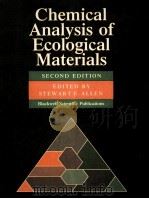《modern methods of chemical analysis second edition》
| 作者 | Thomas cairns 编者 |
|---|---|
| 出版 | John Wiley |
| 参考页数 | 574 |
| 出版时间 | 1976(求助前请核对) 目录预览 |
| ISBN号 | 无 — 求助条款 |
| PDF编号 | 813815528(仅供预览,未存储实际文件) |
| 求助格式 | 扫描PDF(若分多册发行,每次仅能受理1册) |
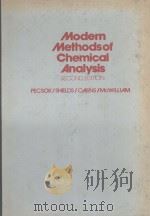
1 Introduction1
PHASE CHANGES AND SEPARATIONS5
2 Analytical Uses of Phase Changes5
2-1 Introduction5
2-2 Phase Changes for Pure Compounds5
2-3 Phase Changes for Mixtures13
2-4 Fractional Distillation19
2-5 Nonideal Solutions24
3 Extraction28
3-1 Introduction28
3-2 Distribution Law29
3-3 Successive Extractions30
3-4 Separation of Mixtures by Extraction33
3-5 The Craig Method of Multiple Extraction34
3-6 Continuous Countercurrent Extraction38
4 Chromatography41
4-1 Introduction41
4-2 Types of Chromatography42
4-3 Chromatographic Theory44
5 Liquid Column Chromatography54
5-1 Introduction54
5-2 Liquid-Solid Adsorption Chromatography54
5-3 Liquid-Liquid Partition Chromatography59
5-4 High Performance Liquid Chromatography60
5-5 Ion Exchange Methods62
5-6 Gel Chromatography70
6 Plane Chromatography76
6-1 Introduction76
6-2 Paper Chromatography77
6-3 Thin-Layer Chromatography81
6-4 Zone Electrophoresis82
7 Gas Chromatography85
7-1 Introduction85
7-2 Basic GLC Apparatus85
7-3 Carrier Gas86
7-4 Sample Introduction86
7-5 Columns88
7-6 Column Performance88
7-7 Solid Supports89
7-8 Liquid Phases90
7-9 Detectors92
7-10 Qualitative Analysis: Retention Parameters97
7-11 Quantitative Analysis102
7-12 Temperature Effects105
7-13 Gas-Solid Chromatography106
7-14 Applications108
ELECTROMAGNETIC RADIATION115
8 Electromagnetic Radiation and Its Interaction with Matter115
8-1 Introduction115
8-2 Nature of Electromagnetic Radiation115
8-3 Absorption and Emission of Radiation117
8-4 Luminescence Phenomena120
8-5 Refraction and Refractive Index122
8-6 Interference and Diffraction125
8-7 Light Scattering127
8-8 Rotation of Polarized Light128
9 Quantitative Analysis by Absorption of Electromagnetlc Radiation133
9-1 Introduction133
9-2 Quantitative Laws133
9-3 Deviations from Beer's Law138
9-4 Photometric Error142
9-5 Intensity of Luminescence143
10 instrumentation for Spectrometry147
10-1 Introduction147
10-2 Sources of Radiant Energy147
10-3 Monochromators148
10-4 Sample Handling153
10-5 Detection Devices154
10-6 Amplification and Readout of Detector Signals158
10-7 Single-Beam vs.Double-Beam Operation160
10-8 Typical Instruments161
11 Infrared Spectroscopy165
11-1 Introduction165
11-2 Infrared Theory166
11-3 Sample Preparation170
11-4 Infrared Absorption Spectra171
11-5 Infrared Correlation Charts173
11-6 Interpretation of Infrared Absorption Spectra173
11-7 Representative Spectra177
11-8 Elucidation of Structure184
11-9 Tables of Absorption Characteristics201
12 Ultraviolet Spectroscopy226
12-1 Introduction226
12-2 Theory226
12-3 The Chromophores228
12-4 Solvation and Substitution235
12-5 Interpretation and Use of Ultraviolet Spectra237
13 Flame Emission and Atomic Absorption Spectroscopy243
13-1 Introduction243
13-2 Emission and Absorption in Flames243
13-3 Atomization and Ionization245
13-4 Flames246
13-5 Burners and Nebulizers248
13-6 Nonflame Atomization251
13-7 Radiation Sources and Optical Systems253
13-8 Flame Spectra and Interferences256
13-9 Quantitative Analysis259
13-10 Typical Applications262
14 X-ray Methods267
14-1 Introduction267
14-2 Emission, Dispersion and Detection of X rays267
14-3 Absorption of X rays273
14-4 Diffraction of X rays275
14-5 Electron Microprobe Analysis278
15 Nuclear Magnetic Resonance Spectroscopy279
15-1 Introduction279
15-2 Magnetic Properties of the Nucleus279
15-3 Nuclear Resonance281
15-4 Nuclear Relaxation282
15-5 N.M.R. Instrumentation and Technique283
15-6 The Chemical Shift285
15-7 Spin-Spin Splitting292
15-8 Interpretation of N.M.R. Spectra299
15-9 Additional Topics305
MASS SPECTROMETRY316
16 Mass Spectrometry of Organic Compounds316
16-1 Introduction316
16-2 Methods of Ion Production316
16-3 Ion Separators321
16-4 Ion Collection and Recording325
16-5 Sample Handling Techniques325
16-6 Resolution328
16-7 The Mass Spectrum328
16-8 Interpretation of Mass Spectra331
16-9 Behavior of Classes of Compounds334
16-10 Identification of Unknowns343
16-11 Analysis of Mixtures346
16-12 Some Additional Applications347
17 Spark Source Mass Spectrometry353
17-1 Introduction353
17-2 Instrumentation353
17-3 Sample Handling354
17-4 Interpretation of Spectra356
17-5 Qualitative Identification of Elements356
17-6 Quantitative Analysis358
ELECTROANALYTICAL CHEMISTRY361
18 Electrochemical Cells and Potentiometry361
18-1 Introduction361
18-2 Electrochemical Cells362
18-3 Electrode Potentials365
18-4 Types of Electrodes377
18-5 Cell Voltage Measurements383
18-6 Definition of pH and the pH Meter384
18-7 Equilibrium Constants386
18-8 Potentiometric Titrations389
18-9 Coupled Reaction Systems394
19 Some Other Electrochemical Techniques400
19-1 Electrodeposition400
19-2 Controlled Current Electrolysis401
19-3 Controlled Cathode (or Anode) Potential Electrolysis403
19-4 Secondary Coulometric Titrations403
19-5 Polarography406
ACIDS, BASES AND THEIR SALTS AND COMPLEXES413
20 Monoprotic Systems413
20-1 Introduction413
20-2 Acid-Base Concepts413
20-3 Role of the Solvent414
20-4 Relative Strengths of Acids and Bases416
20-5 Equilibria in Monoprotic Systems419
20-6 Acid-Base Titrations in Aqueous Solution427
20-7 Acid-Base Titrations in Nonaqueous Solvents431
21 Polyprotic Systems438
21-1 Introduction438
21-2 Phosphoric Acid System438
21-3 Distribution of Species Diagrams439
21-4 Calculations for Polyprotic Systems442
21-5 Titrations with Polyprotic Systems445
21-6 Polyamine and Amino Acid Systems446
21-7 Amino Acid Titrations451
22 Metal Ion Complexes454
22-1 Introduction454
22-2 Monodentate Ligands454
22-3 Metal Chelates456
22-4 Conditional Formation Constants458
22-5 Titration Equilibria460
22-6 Compleximetric Indicators462
22-7 Scope of EDTA Applications463
RADIOCHEMISTRY466
23 Radiochemical Methods466
23-1 Introduction466
23-2 Radioactive Disintegration466
23-3 Interaction of Radiation with Matter469
23-4 Detection and Measurement of Radioactivity471
23-5 Counting Statistics, Errors and Corrections475
23-6 Some Applications of Radioisotopes480
23-7 Radiation Safety482
EVALUATION AND PROCESSING OF ANALYTICAL DATA485
24 Statistical Treatment of Data485
24-1 Introduction485
24-2 Significant Figures485
24-3 Types of Errors486
24-4 Normal Distribution of Random Errors487
24-5 Statistical Treatment of Small Data Sets490
24-6 Control Charts492
25 Data Processing494
25-1 Introduction494
25-2 Indicating and Recording Devices494
25-3 Integrators497
25-4 Digital Computers501
25-5 Computerized Gas Chromatography503
25-6 Computerized Mass Spectrometry505
25-7 Computerized N.M.R. Spectroscopy509
25-8 Other Analytical Applications of Digital Computers512
25-9 Operational Amplifiers513
25-10 Analog and Hybrid Computers515
AUTOMATIC AND PROCESS ANALYZERS519
26 Automatic Analyzers519
26-1 Introduction519
26-2 Basic Automatic Analyzer520
26-3 Beckman "DSA 560"521
26-4 Ljundberg "Autolab"522
26-5 DuPont "ACA"522
26-6 Technicon "AutoAnalyzer"524
26-7 Electro-Nucleonics "GeMSAEC System"528
27 Process Analyzers531
27-1 Introduction531
27-2 Specific and Nonspecific Analyzers531
27-3 Typical Process Analyzer532
27-4 Sample Handling System533
27-5 Analyzer Calibration534
27-6 Process Gas Chromatograph535
27-7 Oxygen Analyzers538
27-8 Infrared Analyzers540
27-9 Moisture Analyzers542
27-10 Colorimetric Analyzers544
28 Process Control547
28-1 Introduction547
28-2 Feedback Control547
28-3 Dynamic Response of the System549
28-4 Cascade and Feedforward Control551
28-5 Controller Characteristics553
28-6 Applications of Control Systems558
Index564
1976《modern methods of chemical analysis second edition》由于是年代较久的资料都绝版了,几乎不可能购买到实物。如果大家为了学习确实需要,可向博主求助其电子版PDF文件(由Thomas cairns 1976 John Wiley 出版的版本) 。对合法合规的求助,我会当即受理并将下载地址发送给你。
高度相关资料
-
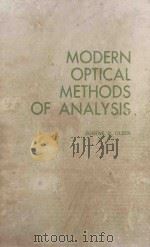
- MODERN OPTICAL METHODS OF ANALYSIS
- 1975 MCGRAW-HILL BOOK COMPANY
-

- METHODS OF REAL ANALYSIS SECOND EDITION
- JOHN WILEY & SONS,INC.
-
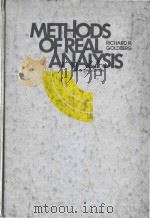
- Methods of real analysis Second Edition
- 1976 Wiley
-
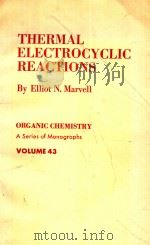
- THERMAL ELECTROCYCLIC REACTIONS
- 1980 ACADEMIC PRESS
-
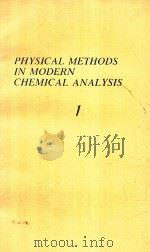
- PHYSICAL METHODS IN MODERN CHEMICAL ANALYSIS VOLUME.1
- 1978 ACADEMIC PRESS
-

- TECHNICAL METHODS OF CHEMICAL ANALYSIS SECOND EDITION VOLUME II
- 1955 CHARLES A.KEANE AND L.THORNE
-

- TECHNICAL METHODS OF CHEMICAL ANALYSIS SECOND EDITION VOLUME III
- 1955 CHARLES A.KEANE AND L.THORNE
-
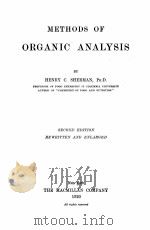
- METHODS OF ORGANIC ANALYSIS SECOND EDITION
- 1920 THE MACMILLAN COMPANY
-
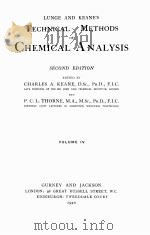
- LUNGE AND KEANE‘S TECHNICAL METHODS OF CHEMICAL ANALYSIS SECOND EDITION VOLUME IV
- 1940 GURNEY AND JACKSON
-
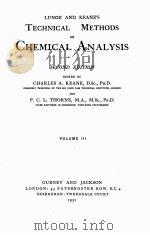
- LUNGE AND KEANE‘S TECHNICAL METHODS OF CHEMICAL ANALYSIS SECOND EDITION VOLUME III
- 1931 GURNEY AND JACKSON
-

- LUNGE AND KEANE‘S TECHNICAL METHODS OF CHEMICAL ANALYSIS SECOND EDITION VOLUME II
- 1928 GURNEY AND JACKSON
-

- CHEMICAL ANALYSIS SECOND EDITION
- MCGRAW-HILL
-
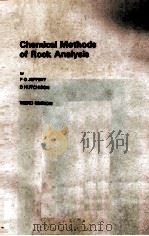
- Chemical Methods of Rock Analysis THIRD EDITION
- PERGAMON PRESS
提示:百度云已更名为百度网盘(百度盘),天翼云盘、微盘下载地址……暂未提供。➥ PDF文字可复制化或转WORD
